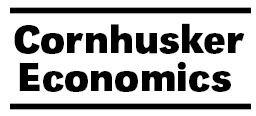Agricultural Economics, Department of

Cornhusker Economics
Consumer Attitudes and Labeling Regimes as Determinants of the Market Success of Food Nanotechnology
Date of this Version
2-2012
Document Type
Newsletter Issue
Citation
Cornhusker Economics (February 2012)
Abstract
In a recent poll conducted by the Institute of Food Technologists, when consumers were asked about their knowledge of nanotechnology and its applications to the food sector, two-thirds said they had heard ‘nothing at all’ about the technology (Food Safety News 2010). European polls tell a similar story; a 2010 Eurobarometer survey showed that, while public awareness of nanotechnology is gradually emerging, more than half of the respondents knew nothing about the technology, and could not tell whether it would have a positive or a negative impact on their lives (European Commission 2010).
According to the National Nanotechnology Initiative, nanotechnology is “a science that involves the design and application of structures, devices and systems on a nanoscale; that is billionths of a meter.” Among early adopting industries of nanotechnology have been high profit margin sectors like cosmetics’, sports equipment and apparel. As the development of nanotechnology moves from first-generation (material) to second-generation (component) and third-generation (device) technologies, its potential applications to industrial sectors such as pharmaceuticals, biotechnology, medical devices, energy, national security and defense and the agri-food sector can be limitless (The Nanotechnology Institute 2012).


Comments
Published by University of Nebraska–Lincoln Extension, Institute of Agriculture & Natural Resources, Department of Agricultural Economics. Copyright © [2012] Board of Regents, University of Nebraska. http://agecon.unl.edu/cornhuskereconomics